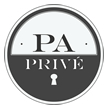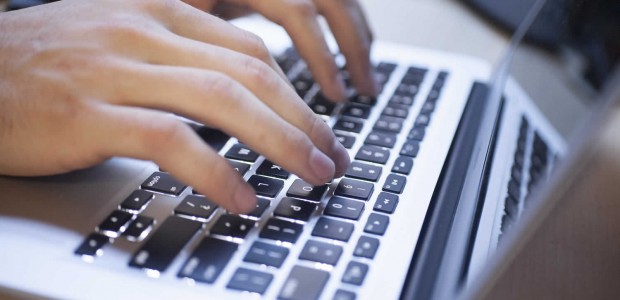Email is one of the most common forms of communication. How you compose an email can reveal a lot about you – your professionalism, your communication skills, your personal image, and your attention to detail.
It’s time for a more mindful approach, one that fully embraces a “less is more” strategy. To help you get started, we’ve assembled a cheat sheet of our email best practices. And, trust us, it’s not just about being more polite, it’s about being more efficient and getting the responses you need.
There are three styles of email:
- Informal, e.g. emails between friends.
- Standard, e.g. emails between you and your lecturer/colleague.
- Formal, e.g. as one part of your job application.
Follow these simple rules to get your emails noticed and acted upon.
- Don’t over communicate by email.
- Make good use of subject lines.
- Keep messages clear and brief.
- Be polite.
- Check your tone.
Begin each email with a greeting
No matter how pressed for time you are, a simple greeting such as “Hi,” “Hello,” or “Dear X” is good etiquette. Otherwise, if you launch into your email without a greeting or introduction you run the risk of seeming impolite or impatient.
Clarity of Purpose – what’s the reason behind the email and what you want the recipients to do?
Identify the purpose of the email: It is very important for you to identify the purpose of the email prior to writing it and then to make that purpose clear in the subject and beginning of your email.
Make Good Use of Subject Lines
A newspaper headline has two functions: it grabs your attention, and it summarizes the article, so that you can decide whether to read it or not. The subject line of your email message should do the same thing.
Use Power Words
Sensory and emotional words attract attention, and make your subject lines stand out in crowded inboxes.
Use exclamation points sparingly
The maximum number of exclamation points in business e-mail? One. Otherwise, you risk looking childish and unprofessional.
Keep everything short and simple and to the point
Emails were meant to be a way to communicate simply and quickly.
Do not use all CAPS in your Emails
This is perceived as yelling in the digital world. If you need to do emphasis on something, use bold or italics on the points you want to emphasize.
Watch your tone
It’s hard to read tone in an email, which is why emoticons were invented. You want to come across as respectful, friendly, and approachable. You don’t want to sound curt or demanding. Be careful not to inject attitude or sarcasm into your replies. Also be really careful when trying to be funny — it’s easy to misinterpret humor in email.
Bottom line: No matter how you feel about the people you’re communicating with or the contents of the message, go out of your way to always be upbeat and polite.
Be Personal and Personable
Personalize email with relevant remarks to the receiver, put in a quick comment about their site, product or work. Address the person by name, sign email with your own name, and a friendly comment like “Enjoy your day!”
Cc: and Bcc: (‘carbon copy’ and ‘blind carbon copy’)
Copying individuals on e-mail is a good way to send your message to the main recipient while also sending someone else a copy at the same time. This can be useful if you want to convey the same exact message to more than one person.
Blind copying e-mails to a group of people can be useful when you don’t want everyone on the list to have each other’s e-mail addresses. The only recipient address that will be visible to all recipients is the one in the To: field. If you don’t want any of the recipients to see the e-mail addresses in the list, you can put your own address in the To: field and use Bcc: exclusively to address your message to others. However, do not assume that blind copying will always keep recipients from knowing who else was copied—someone who is blind copied may hit “reply all” and send a reply to everyone, revealing that he/she was included in the original message.
Attachments
If sending attachments, did you ask first when would be the best time to send? Did you check file size to make sure you don’t fill the other side’s inbox causing all subsequent e-mail to bounce?
Proofread
Take the time to proofread your document before you sent it. Use your email program’s spell-checking tool, proofread your message, and read it aloud in a separate pass.
Check the email before clicking on the Send button:
- Am I sending this email to the right person?
- Is the email address of the recipient correct?
- Have I written something appropriate in the subject line?
- Have I greeted the recipient?
- Have I spelled the recipient’s name correctly?
- Have I organized my email contents in clearly divided short paragraphs and/or bullets, using clear, simple and direct language?
- Spelling errors? Appropriate punctuation? Accurate information?
- Have I signed off the email?
The proper closing
Would be thanks or regards. Sign your full name when emailing clients; your first name is fine with colleagues. After multiple email exchanges initials are fine.
Respond Promptly – Between 24HS
If you want to appear professional and courteous, make yourself available to your online correspondents. Even if your reply is, “Sorry, I’m too busy to help you now,” at least your correspondent won’t be waiting in vain for your reply.
What are your strategies for ensuring a prompt reply? Share your comments with us.
Sign up to become a member of PA Prive Network here for more advice, insight and best practice direct to your inbox.






